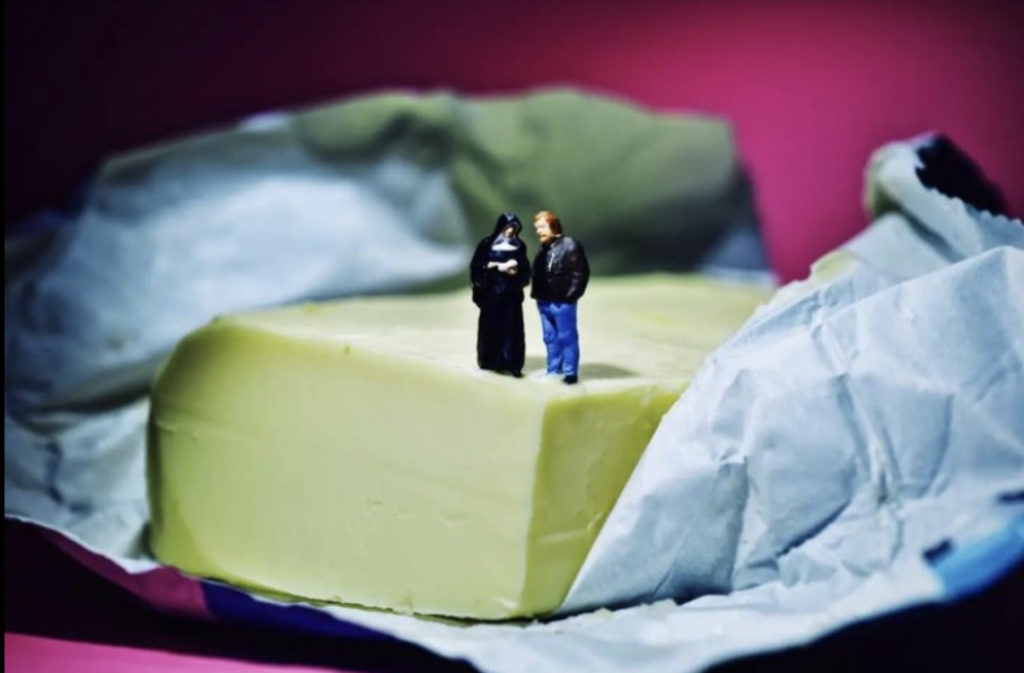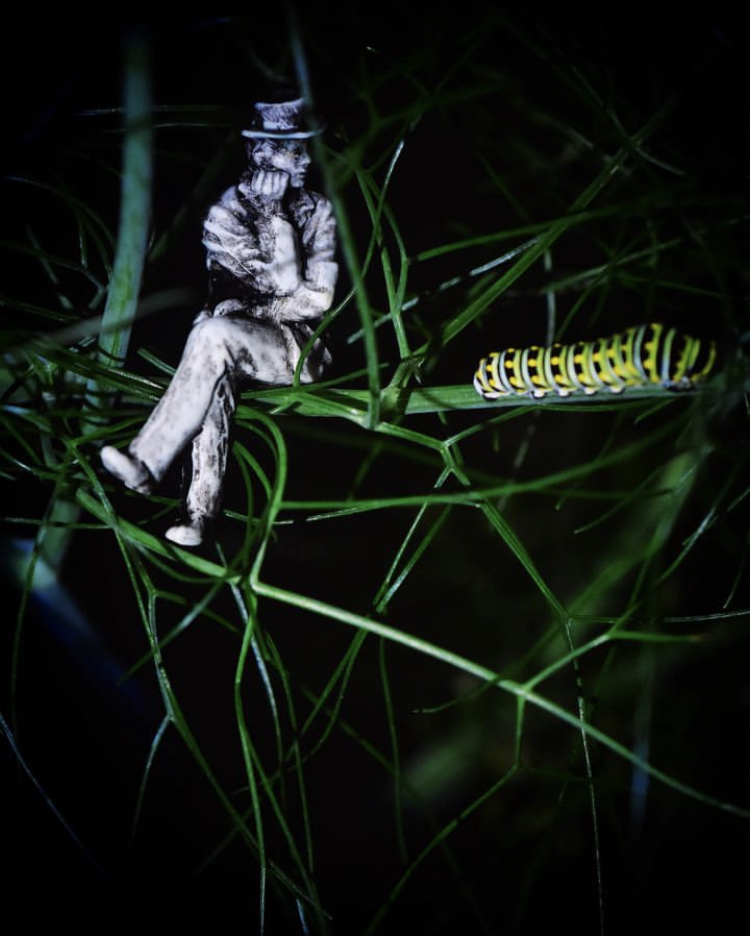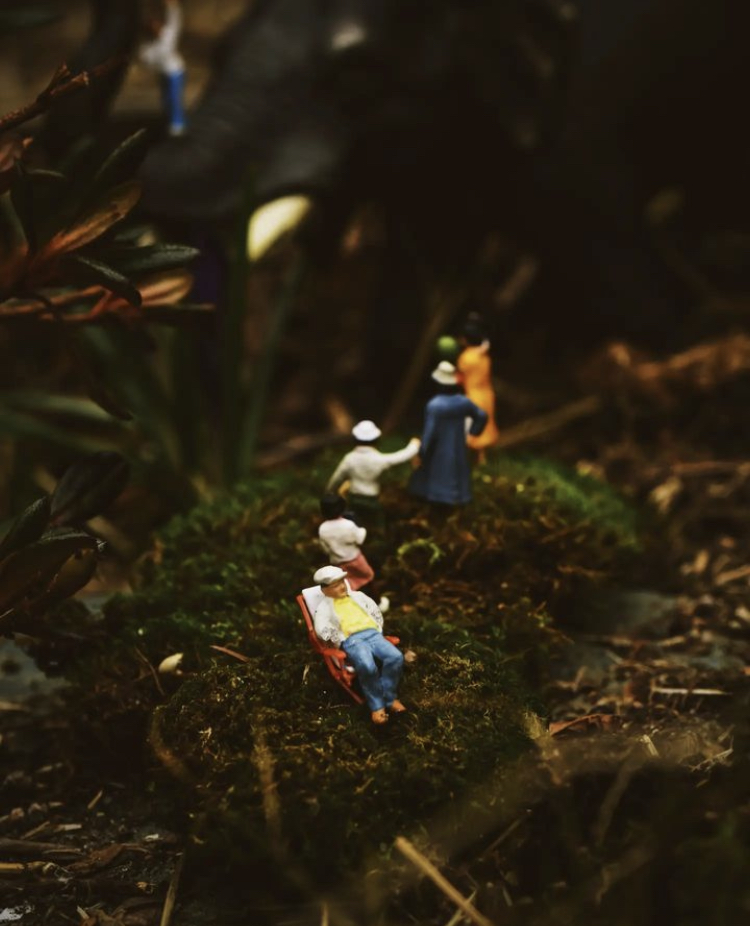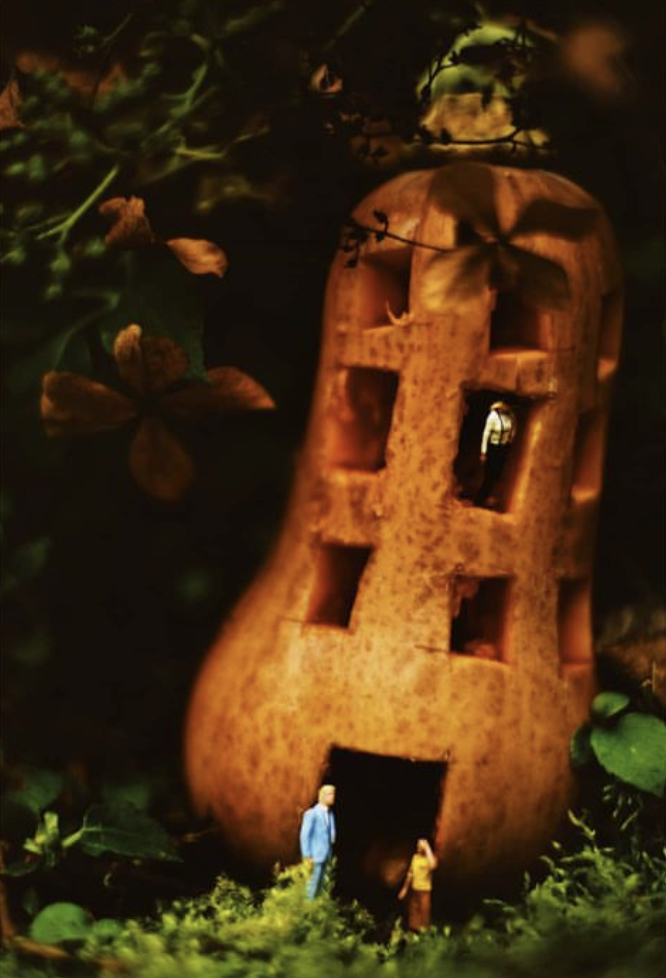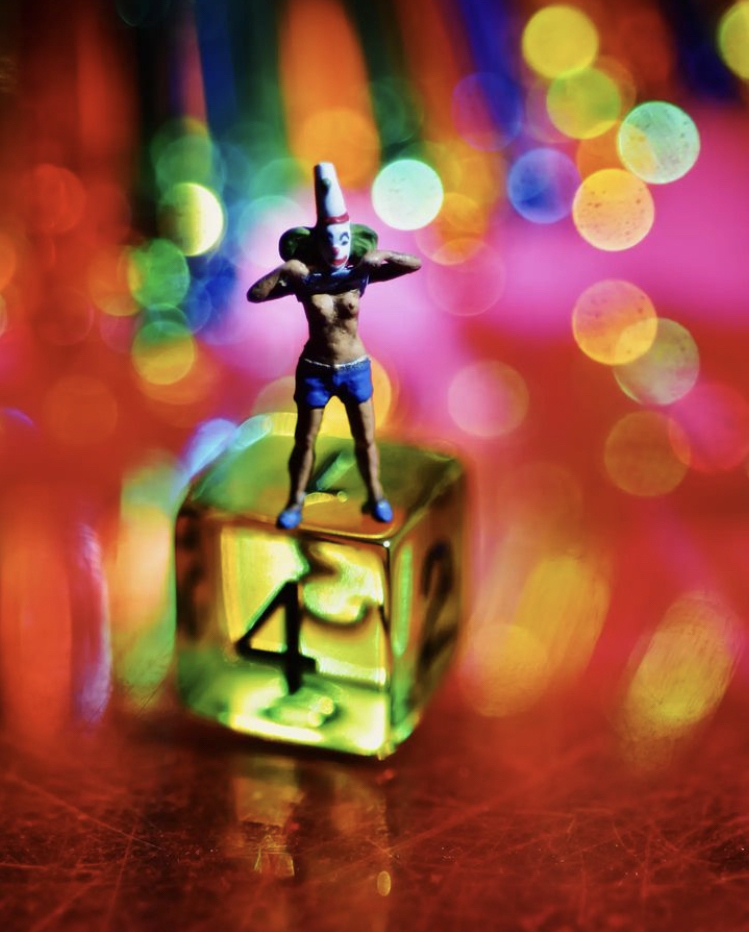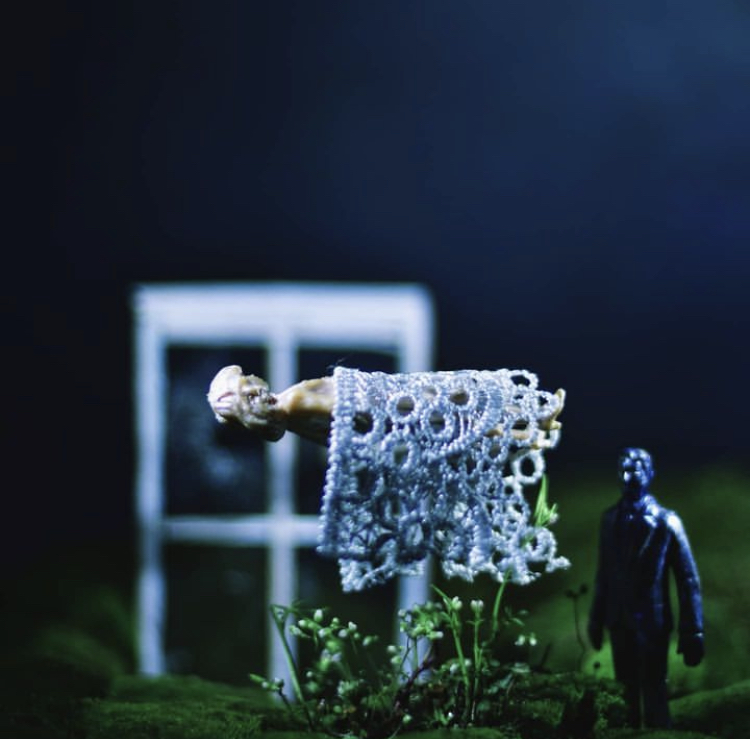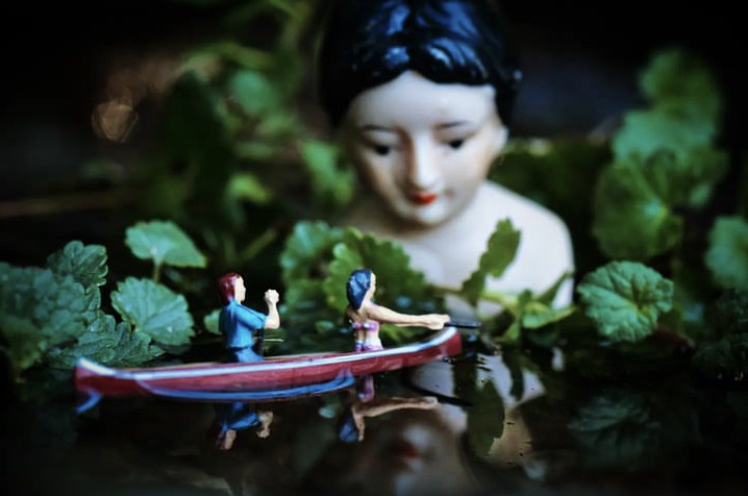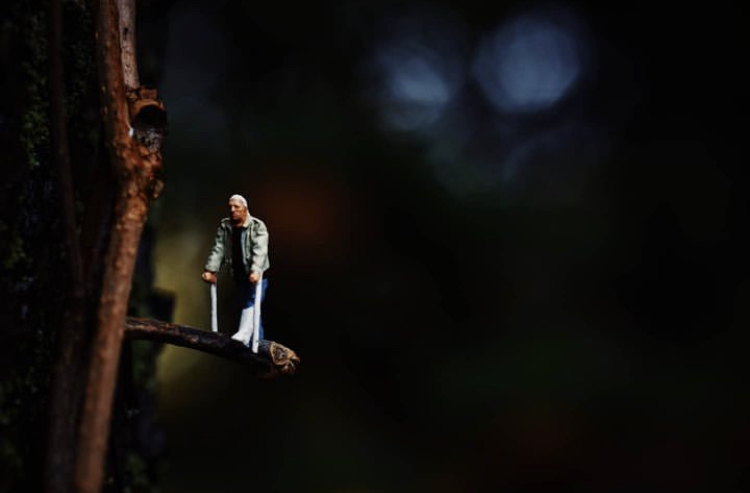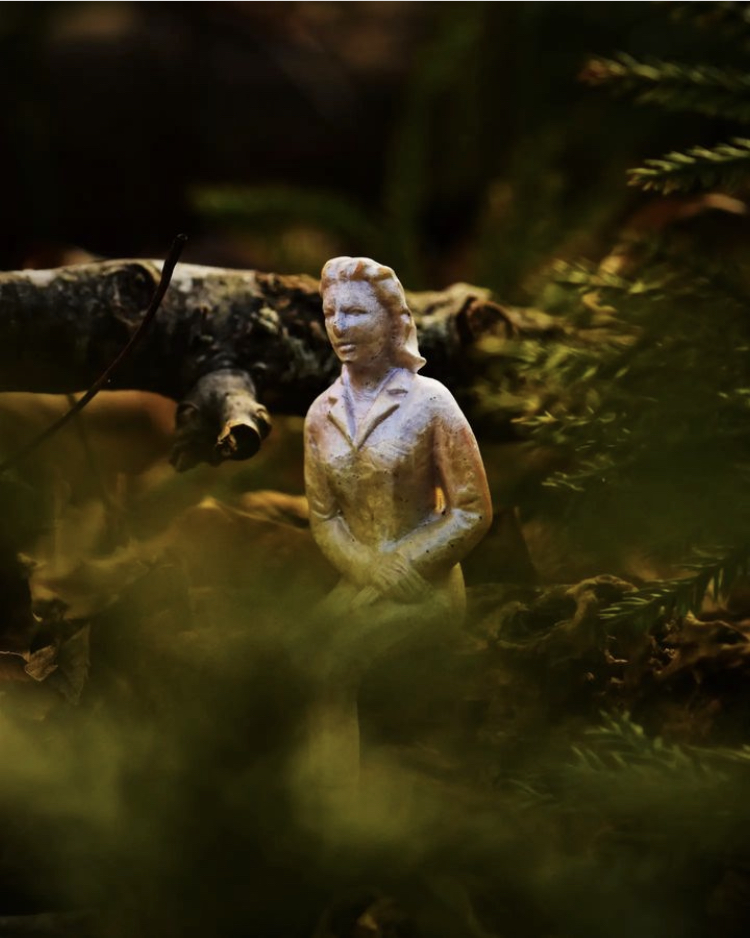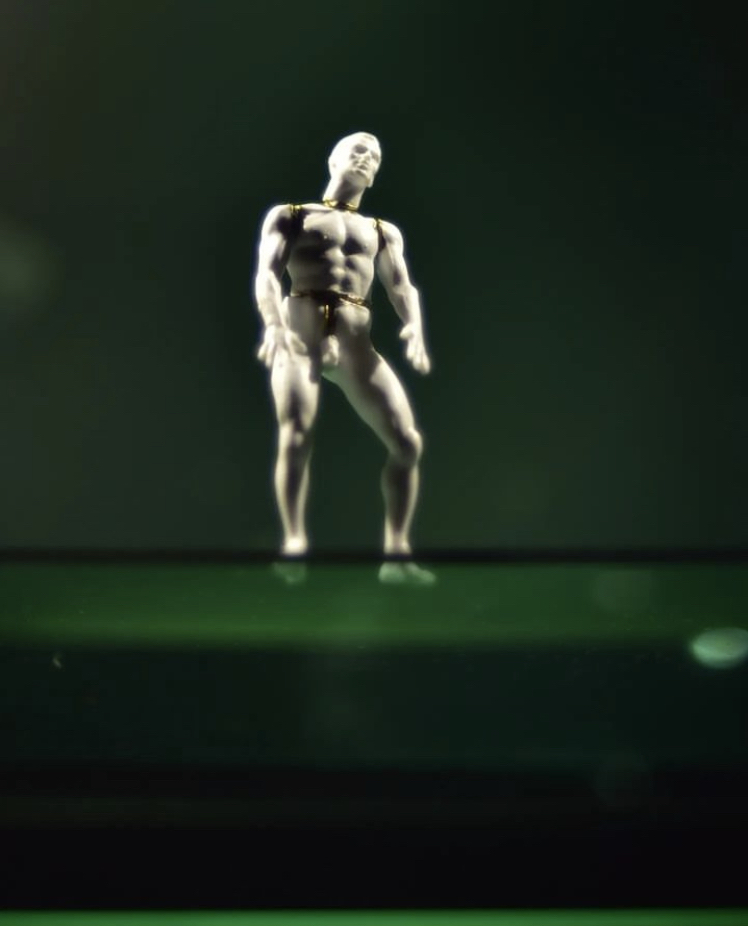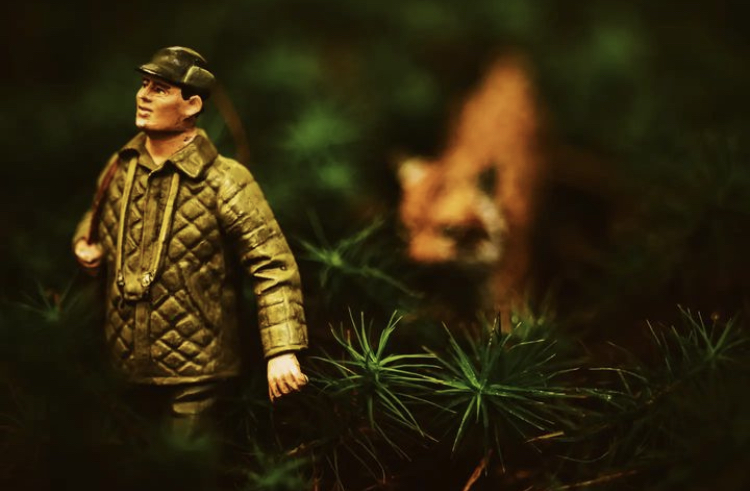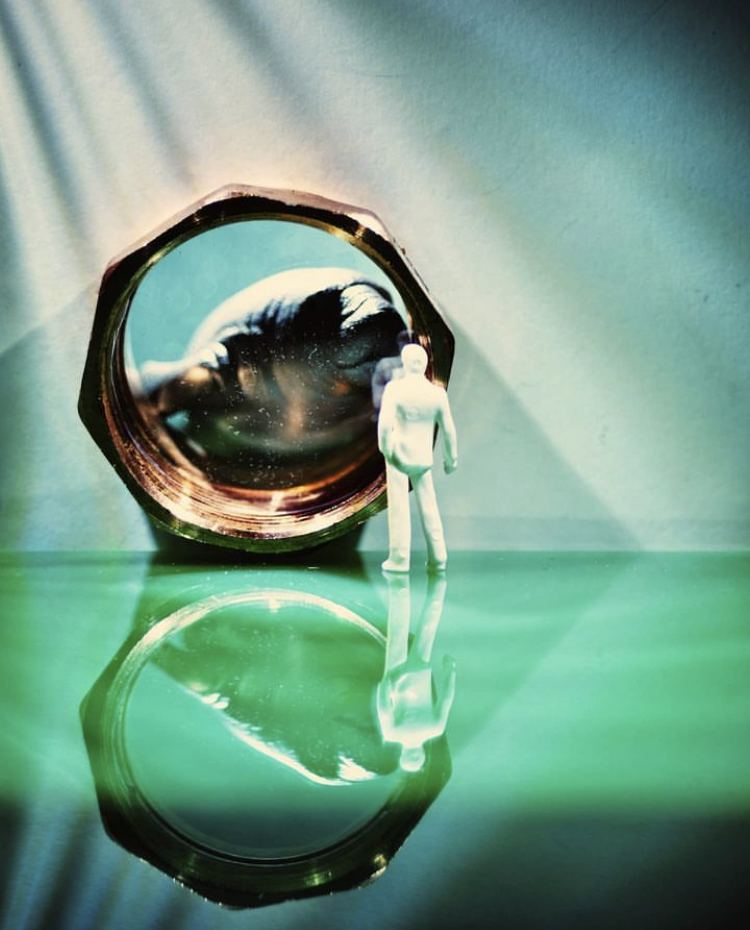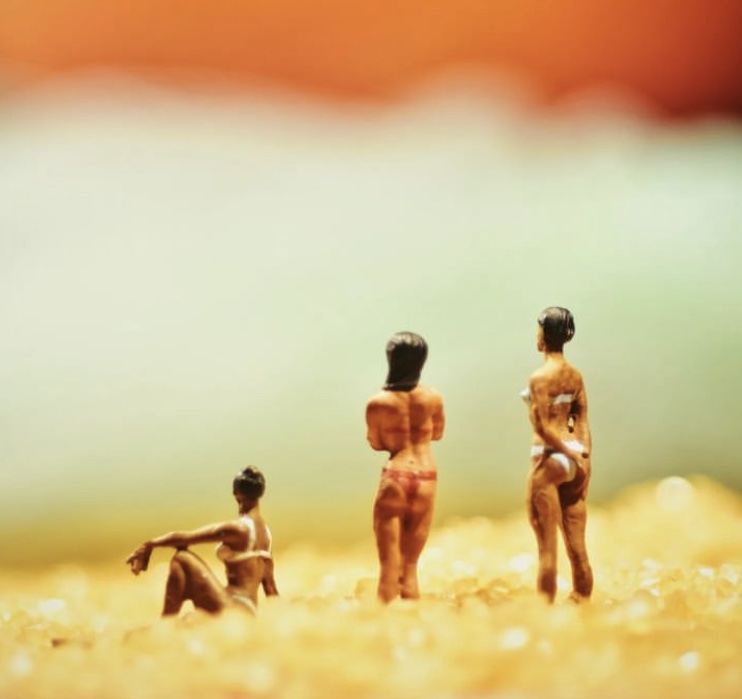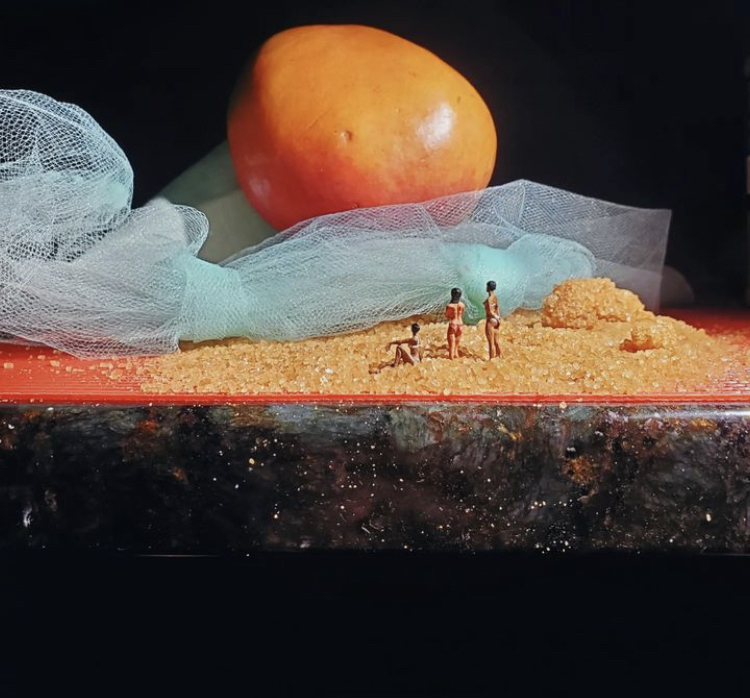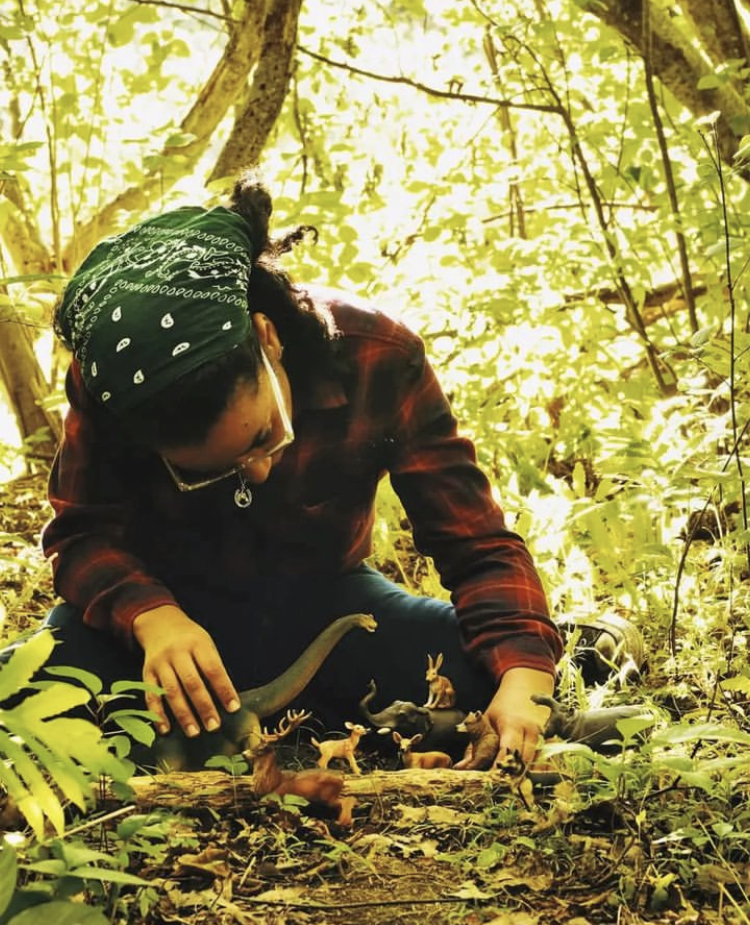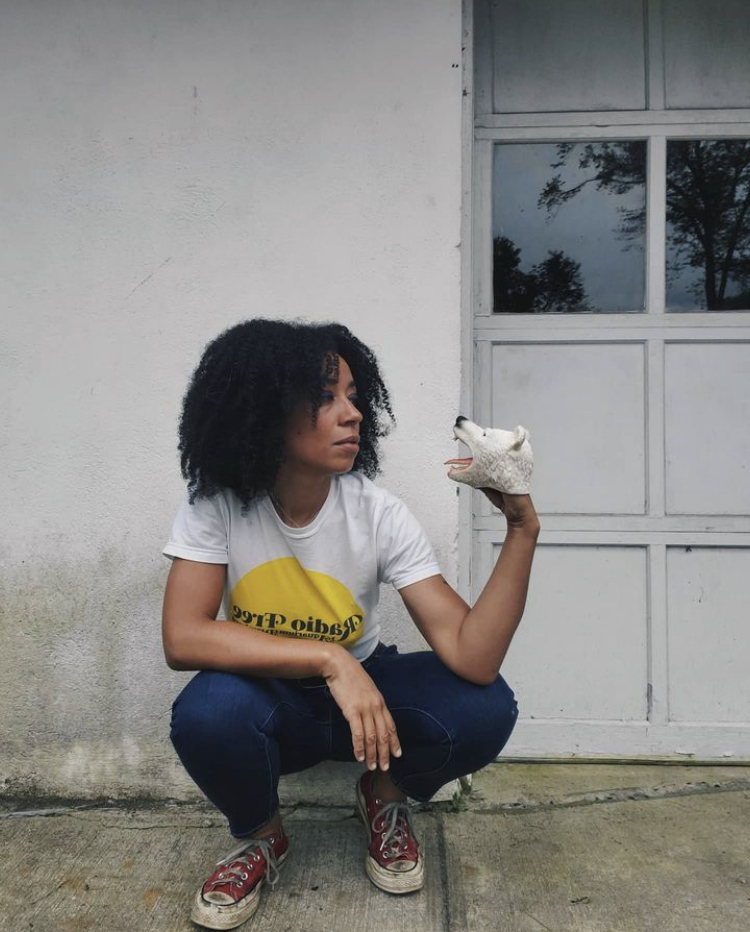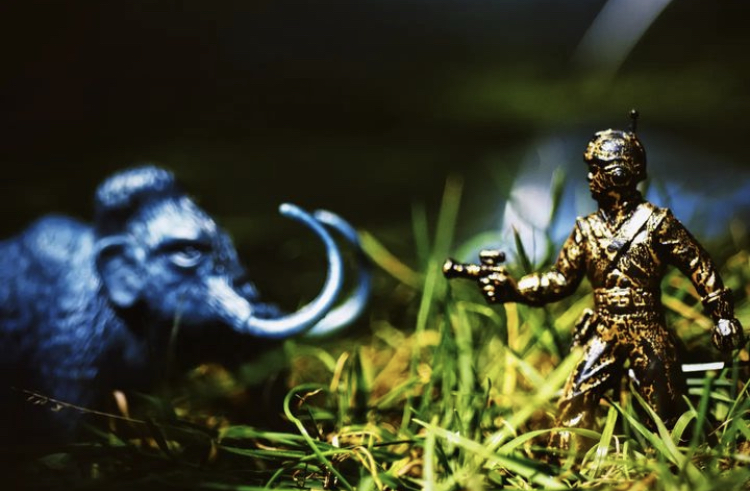Tara Gorman wakes at 6 a.m. to be at work by 7. She’s a retail manager at a wholesale produce company in Western Massachusetts. She calls it “the fruit mines,” and tells me she likes her job. Most days Tara works until 6:30 p.m. and is home by 7. After dinner she does whatever chores need to be done to clean up from that day and prepare for the next. Then, with whatever time and energy is left, Tara goes to the basement to play with toys. She makes dioramas or stages scenes that sometimes include produce or other food. On her day off Tara might walk in the woods, bringing along an elephant, a nun, or a man in a lawn chair or other little toys as well as her camera. This got me thinking: do adults make art for the same reasons children play? Neither activity is immediately necessary for survival and yet––
I discovered Tara Gorman’s color photographs on Instagram. Her subjects are figures, not life-sized or living, little figurines of humans, animals, and a few mythological creatures. These figures are usually engaged in an activity or interaction with each other or with nature. The scenes often appear to take place outdoors in a landscape of saturated color, though I know some of these worlds were created in Tara’s basement. On a formal level, Tara Gorman’s photographs deal with issues of scale, and figure-ground relationships and color. They are driven by narrative. The characters in these scenes are sometimes incongruent in scale; in one image a human baby is the size of a tiger’s head, in another, a human man is the size of the tiger’s paw. Objects too: a mushroom is as large as a beach umbrella and a kumquat has become a rowboat. The environment in the pictures reminds me of Land of the Lost, or those 1980s toy commercials that made me wonder if other kids had little waterfalls and miniature forests in their backyard. The aesthetic is decidedly pre-CGI. These photographs are nostalgic and whimsical without being cute. Some verge on creepy and have an expectant atmosphere or seem to be fragments of a dream.
Art, like child’s play, is part verb, part noun. It explores, through non-verbal storytelling, ideas or sensations that have not yet calcified into language. Tara Gorman’s photographs contain that big-world, small-person feeling of childhood: that cellar of our psyche. These images recall the innocence of childhood and also the darkness of it.
The effect of using toys as stand-ins for living figures in photographs has been used by artists such as David Leventhal and Laurie Simmons. When the figure is a figurine, the subject is part plaything, part human, holding the conceptual sum of both. The figurine-human evokes the idea that we are the playthings of larger forces and fates. The expression or absence of expression in the figurine’s gaze calls attention to human states of presence or vacancy.
Tara Gorman’s photographs retain the sense play from which they were created.
Some of these objects, especially the animals, are recognizable as toys. The worlds in the images seem governed by a child-like logic rather than an everything-to-scale aesthetic other artists working with miniatures have used. Until now Tara Gorman’s photographs have only appeared on Instagram. Collectively, they are a record of trial and error, idea and execution that feel like experiments–in other words, play. They share the IG grid with pictures of food and self-portraits in which the artist exhibits a sense of humor (as well as a sense of produce). This month, Tara Gorman’s photographs will be exhibited for the first time in a group show, Something Extraordinary at Arno Maris Gallery at Westfield State University in Western Massachusetts.
Play is recognized by the American Academy of Pediatrics as a crucial part of a child’s cognitive, physical, and emotional development. I suspect there is no adolescent cut-off for these benefits. Still, it is a mysterious force that urges humans, especially adult humans, to make art. Tara’s practice makes me think about the drawings in Rouffignac’s “Cave of the hundred mammoths.” Prehistoric people navigated the dark labyrinth of the cave to reach a gallery three-quarters of a mile into the ground to draw. Why? Was it play? Was it sacred? Was it art? Is there a difference? I like to think about that connection, those ancient humans drawing with charcoal on the wall and Tara after a long day of work in her basement, photographing tiny plastic mammoths.
All images by Tara Gorman.
